Oregano is a valuable herb for cooking, so if you start to notice spots on your oregano leaves, you’ll want to address the issue as soon as possible. In this article, I’ll explore the possible reasons why oregano leaves get spots and what to do about them.
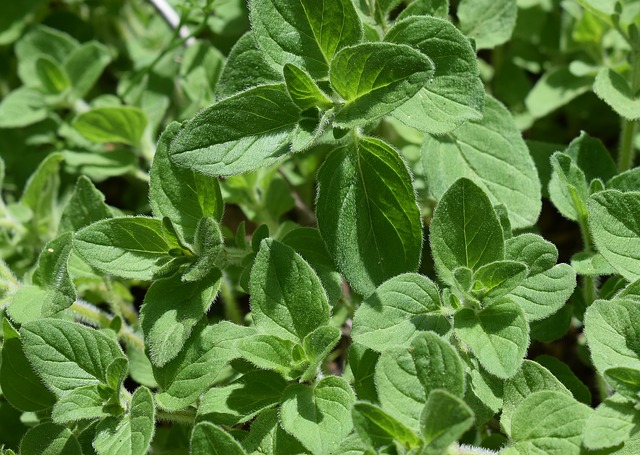
The spots on oregano leaves can be different colors, and that color can help you determine what the problem is. I’ll talk about each type of spot and how to fix them for healthy oregano plants.
The most common reasons for spots on oregano leaves are caterpillar residue, too much nitrogen, fungal diseases, and garden pests.
Let’s take a closer look at each of these and figure out what can be done about them.
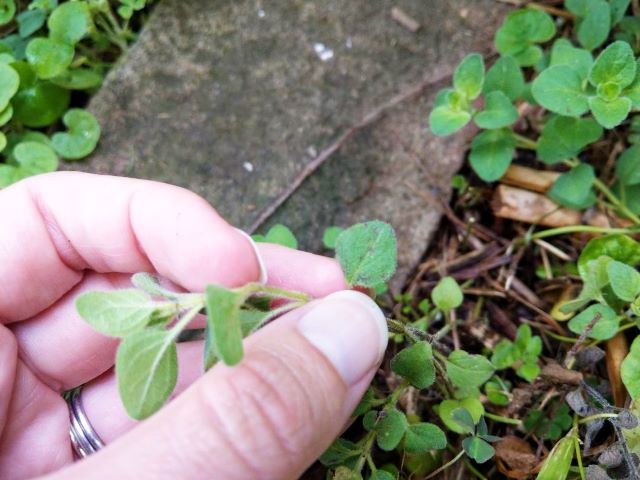
Related: 4 Drought Resistant Herbs | Why Sage Plant is Dying
Table of Contents
Caterpillar Residue Causes Spots on Oregano Leaves
Sometimes, spots on oregano leaves aren’t even something to be concerned about: they might just be waste from caterpillars that have been resting on your plants!
If you notice small black or brown spots on your oregano leaves, try washing them off. If they come off the surface and weren’t actually part of the leaf, you are simply dealing with the droppings of caterpillars.
Be careful when washing off your oregano, as water with high pressure could damage the leaves. Try to be gentle. If your hose is very high-pressure, you can get a spray bottle and use that to wash off the leaves.
Thankfully, these caterpillars aren’t harmful to oregano, so the worst they can do to your plants is leave behind their droppings. You can move the caterpillars if you want, and wash down the leaves, but either way, your oregano will still be just fine.
Too Much Nitrogen Causes Spots on Oregano Leaves
Another common cause of spots on oregano leaves is an excess of nitrogen in the soil. Nitrogen is an essential mineral for plants to grow, but too much of it can also damage oregano.
The sign of an excess of nitrogen is yellow spots on oregano leaves, which will eventually spread until whole leaves turn yellow. Additionally, oregano stems will droop. If you notice these symptoms, you should try to treat your oregano quickly.
First, don’t apply more fertilizer to the oregano. If it already has too much, adding more could damage it. It’s better to under-fertilize than over-fertilize in this case.
Additionally, it might be helpful to flush the soil, as this will get rid of excess nitrogen. Make sure the soil can drain well, especially for potted oregano, and provide it with a flood of water. This helps wash the nitrogen out of the soil, so your oregano can start getting back to full health.
Fungal Disease Cause Spots on Oregano Leaves
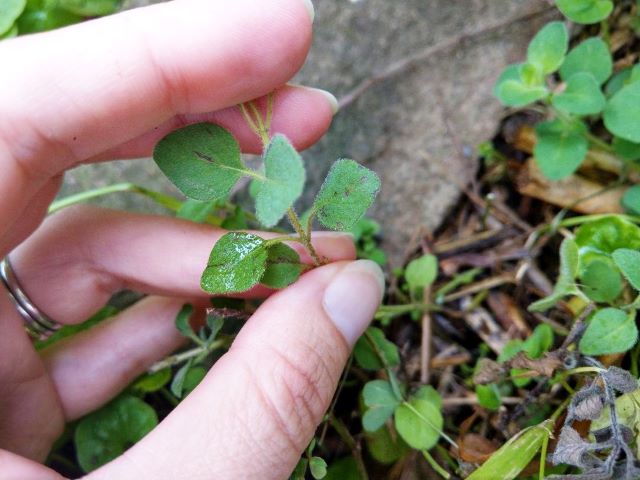
One of the biggest causes of spots on oregano leaves is fungal disease. There are a few different diseases that could be the likely culprit, so let’s look at all of those in detail, as well as some general tips for treating fungal diseases.
Although each fungus is different, a lot of them share similar symptoms and steps for prevention.
Most of the time, fungal diseases can be difficult to treat, especially when organic gardening. I’ve had to battle a few of these with my oregano, and often the best thing you can do is remove the infected plants to prevent the fungus from spreading.
There are, however, ways to help prevent fungal diseases. Fungi thrive in environments that are overly wet or moist, and love poorly draining soil. Additionally, some diseases can find their way into oregano plants via cuts in the stems or leaves.
So, to help prevent fungal diseases on your oregano, make sure not to overwater it. Give it well-draining soil, whether in the ground or in a pot. And be careful to avoid damaging the oregano, as open wounds can invite disease. Always clean your shears before pruning your oregano plants.
Rust Causes Spots on Oregano Leaves
Rust is a fungal disease that is very common for oregano plants. It can cause spots that are yellow, orange, or brown. Orange spots are the best indicator of this fungus, because they don’t occur with other common fungal diseases.
Rust can spread quickly and is difficult to stop. After the spots appear, the rest of the plant will start wilting. The best thing you can do is to remove the infected parts of the plant, or remove entire oregano plants if necessary.
Although frustrating, this is the best way to prevent rust from spreading to the rest of your garden. If you notice oregano leaves with orange, yellow, or brown spots, remove them and any other affected parts of the plant right away.
Botrytis Blight Causes Brown Spots on Oregano Leaves
Brown spots on oregano leaves are a common sight, and they are often caused by a group of fungal diseases collectively called blight. Blight can live in the soil for up to three years, and it can be difficult to get rid of.
Most commonly, blight spreads through the soil, and through cuts in the stems or leaves of oregano. Again, sterilize your shears before using them to help prevent infecting the oregano.
Also, be careful when watering after pruning: if you splash water or dirt up on the rest of the oregano, it’s more likely to get infected.
My entire garden plot was infected with blight for many years. I wasn’t able to move locations, which meant that any of my in-ground plants would start to die off around late July every year. Because of this, I grew my oregano in pots and kept it away from the rest of the soil, which was usually enough to prevent it from getting infected.
When oregano does get blight, though, the best thing to do is remove it. Because blight can live in the soil, discarding the entire plant is your best option.
If it’s an in-ground plant, try to change planting locations for a few years, or use raised beds or pots. If it’s in a pot, simply discard the soil you had been using so it doesn’t spread to other oregano plants.
Rhizoctonia Root Rot and Spots on Oregano Leaves
The last common fungus is the one that causes the disease most gardeners call root rot. This occurs most often when oregano is watered too much, and this excess water promotes the growth of fungus.
While it affects the roots, it can also create yellow or brown spots on oregano leaves which will eventually lead to the plant wilting.
The best way to avoid root rot is to not overwater your oregano. However, if you suspect the plant already has root rot, it might be too late.
The best thing you can do is get rid of your oregano plant, and replace the soil (or, if it’s in-ground, don’t plant there again for a year or two). This gives time for the fungus to die off so it doesn’t infect the next oregano you plant there.
Pests That Infect Oregano Plants Cause Spots on Leaves
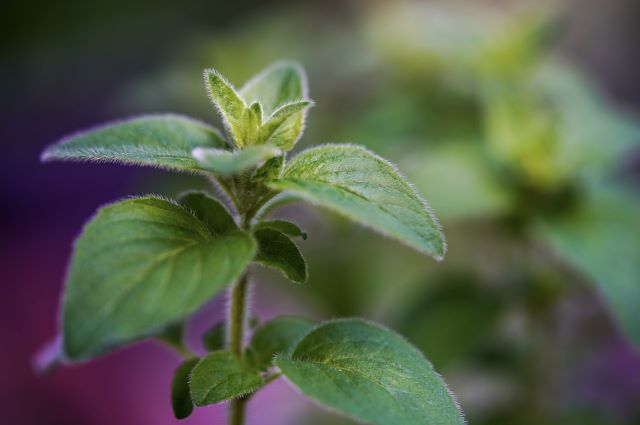
There are three main types of pests for oregano plants: aphids, thrips, and spider mites. I’ll talk about each of them in detail and what you can do about them.
As a general tip, if other solutions fail, sticky traps can be great at getting rid of unwanted pests. Something like these sticky traps can easily be placed in your garden and will help keep your oregano plants safe from pests.
Aphids on Oregano Plants Cause Spots on Leaves
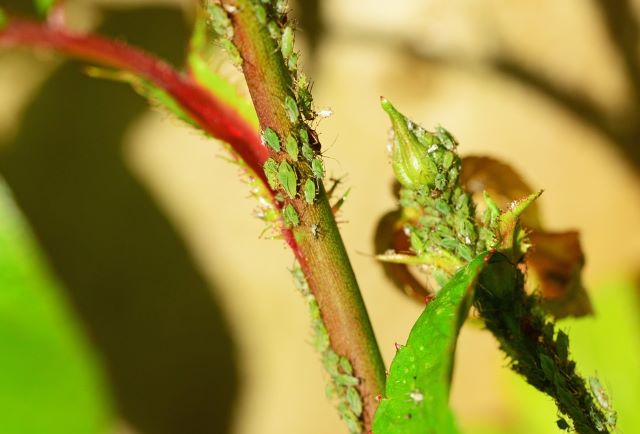
Aphids are many gardeners’ biggest enemy, myself included. I’ve had to fight them off of many plants, including oregano.
Aphids are small yellow or green insects that love to feast on oregano. They will often cause yellow or brown spots on leaves from where they feed. They can spread quickly, and take down entire plants if not treated promptly.
If the infection is small, you can simply wash the aphids off your oregano with pressurized water (as long as it isn’t too strong— don’t damage the leaves!). You can also mix some horticultural neem oil or orange oil with water in a spray bottle and spray your oregano with that. It will kill off the aphids and prevent their eggs from hatching.
Thrips Eating Oregano Plants Causes Spots on Leaves
There are many varieties of thrips that eat different plants, and one of those varieties loves oregano. They leave black residue on oregano leaves, and the leaves may also be mottled with stippling of black or brown dots.
On top of eating your plants, thrips can also transmit viruses that are harmful to oregano, so it’s important to get rid of them.
Once again, a spray of neem oil will kill off thrips. You should also avoid planting your oregano near other plants thrips love, like onions and garlic.
Spider Mites on Oregano Plants Cause Spots on Leaves
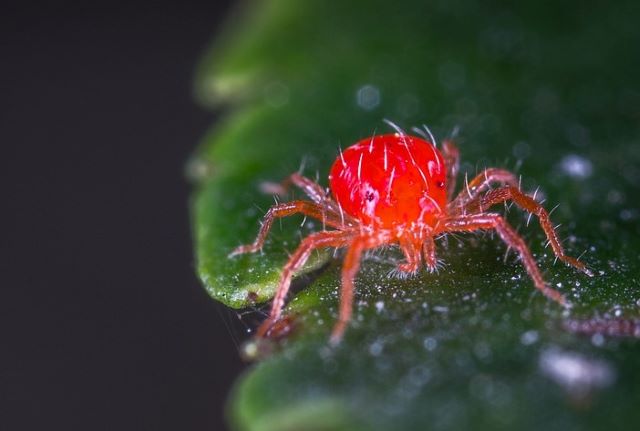
Spider mites are my absolute least favorite pest. Fighting them off oregano can be a pain. But they are treatable.
These small arachnids leave yellow spots on oregano leaves, as well as small white webbing. Spider mites thrive in dry, dusty environments. A simple way to prevent these mites from taking hold is to make sure that the air around your oregano is more humid, either through a humidifier, pebble trays, or misting.
Once you notice the signs of spider mites, you should wash down the leaves of your oregano to try and get them off. If that doesn’t work, make a spray with orange and/or peppermint oil (I like to use both) or neem oil and spray the plant with that, as it will kill them off and prevent their eggs from hatching.
Because of how fast they spread, you want to avoid letting them reach the rest of your crop. The faster you act, the more of your oregano you can keep healthy!
Herb Gardening Favorites
Further Reading:
- 11 Herbs to Grow Indoors (and How to Grow Them)
- 8 Causes of a Dying Rosemary Plant (and How to Fix it)
- Can You Eat Rosemary With Yellow Spots? (Answered!)
- Growing African Blue Basil: Plant Profile and Propagating
- Spots on Arugula? Causes and Solutions
- What’s Eating My Mint? (Holes in Mint Leaves)
- 7 Reasons Basil Leaves Turn Yellow – With Solutions!
- Dying Dill Plant? Common Causes and Solutions
